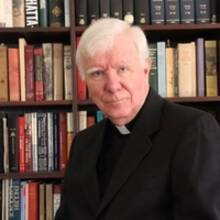Moving With the Times
In the summer of 1961, I asked the proprietor of a Catholic bookstore in Paris whether he had a copy of Yves Congar’s True and False Reform in the Church. After looking around, he took me into a back office and from a bottom drawer pulled out a copy of the book. Only later did I learn the motive for his caution: the Vatican had ordered the book withdrawn from sale and prohibited all translations of it. High figures in the Vatican were not yet ready for a differentiated approach to reform and renewal.
By then, of course, Pope John XXIII had propelled the Catholic Church onto such a path by calling the Second Vatican Council; he let it be known that he had read and annotated Congar’s book, which surely had some influence in his assigning the council the primary tasks of spiritual renewal and pastoral updating (aggiornamento), the latter term itself perhaps a euphemism for the word reform, which still carried unfortunate historical memories for many Catholics. This was a late development. Late medieval councils and the Council of Trent in particular had had no hesitation about declaring the need for reformation in the church (reform both in head and members, the slogan went) and about legislating to bring it about. In fact, Trent used reform language four times more than did Vatican II, which preferred the language of renewal.
Christopher Bellitto, who has taught at St. Joseph’s Seminary in Dunwoodie, N.Y., has had the good idea of offering a readable summary of about a half-century’s scholarly work on the history of church reform. Renewing Christianity studies not only the vocabulary and ideas of reform, but also efforts to bring it about. The language oscillates, without consistent distinction, between reform and renewal. In fact, for the first millennium reform meant primarily a spiritual renewal, greater holiness in individuals, a more authentic realization of Christ’s will. This emphasis never really disappearshow could it?and there are times when Bellitto’s pages verge on becoming a history of efforts at Christian holiness.
Along with this recurrent emphasis on inner renewal, church history has also known movements of institutional reform, such as the Carolingian renaissance and the Gregorian reform of the 11th century. Bellitto refers to these efforts, somewhat disparagingly, one senses, as an example of top-down reform by legislation, and shows how they would be supplemented by the humanism of the 12th-century renaissance and successive revivals in monastic life and the founding of the mendicant orders.
Efforts at reform in the late medieval era were more successful in the members (new schools of spirituality, Christian humanism) than in the head, with bishops and popes successfully forestalling the kinds of reform of hierarchical structure and practice that might have made the Protestant Reformation unnecessary. The reform legislation of Trent would be accompanied by the spiritual revival associated with Teresa of Avila, John of the Cross and Ignatius Loyola. What has been called the dialectic of formation and transformation is clearly visible in these successive moments.
Bellitto seems most at home in the Middle Ages; in fact, he has published an important monograph on reform ideas on the eve of the Protestant and Catholic reformations (his discussion of similarities and differences between the two is illuminating). His chapters on the modern era are less complete and discerning. His assessment is correct, I think, that reform efforts at institutional levels slowed greatly as the church had to confront the new challenges of modernity. Things reached the point that in 1832 Pope Gregory XVI condemned as obviously absurd the idea that defect, shadow or other misfortune could ever cause the church to stand in need of restoration or renewal. Bellitto does not say much about the reform movements to which that was the papal response; there is no consideration, for example, of the Synod of Pistoia (1786) or of equally unsuccessful reform proposals in the 19th century.
The background of Vatican II in various ideas and pastoral projects for renewal is sketched too rapidly, and not enough is made of Rome’s often suspicious attitude toward them. Father Congar was of the view that the dammed-up energies of such efforts, when finally set free by Vatican II, swept away much that was valuable in preconciliar Catholicism. However that may be, we have lived over the last 40 years a particularly dramatic period in the history of reform in the church, and one could wish that Bellitto had attempted a fuller comparison of the impact of the council to earlier eras.
Vatican II illustrated two dimensions that Bellitto often describes: respect for the tradition and creative response to contemporary challenge. In fact, it could be argued that it was the rediscovery of a richer and deeper tradition that liberated Vatican II for a new and more positive attitude toward the modern world. The council also made an effort to promote both institutional reform and spiritual renewal, the two goals originally set for it by John XXIII and confirmed by Paul VI. Since the council these two goals have sometimes, as in the recently concluded synod, been made to appear incompatible with each other, as if to be interested in one is not to care about the other.
Christopher Bellitto’s book, not least of all because of the fine bibliography it provides, demonstrates that renewal and reform are simply two dimensions of what Vatican II called a perennial responsibility of the pilgrim church, and that one no more has to choose between them than between tradition and creativity.
This article also appeared in print, under the headline “Moving With the Times,” in the December 3, 2001, issue.








